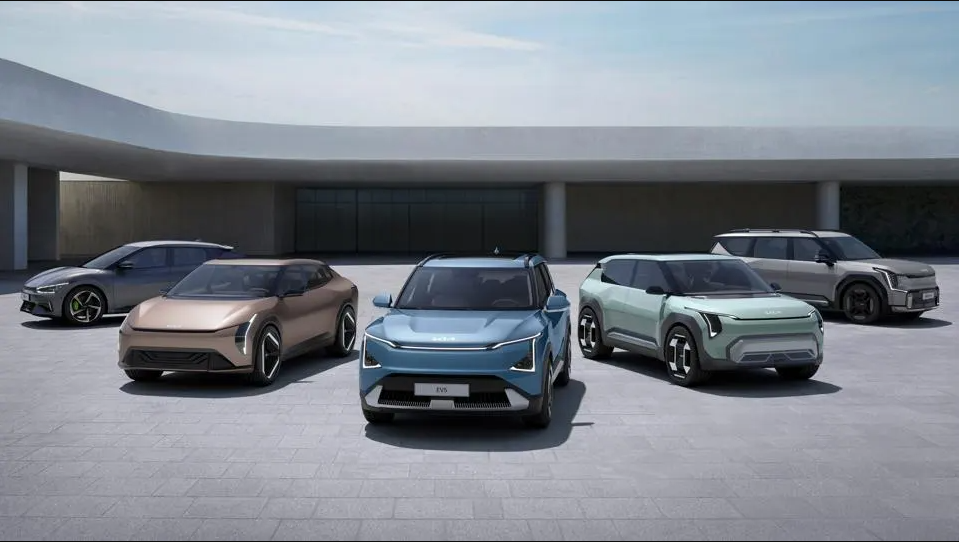The Future of Electric Cars: What to Expect in the Next 5 Years
The Future of Electric Cars: What to Expect in the Next 5 Years
Electric vehicles (EVs) have rapidly shifted from a niche market to a central player in the global automotive industry. With rising concerns over climate change, government regulations, and technological advancements, the future of electric cars is looking brighter than ever.
So, what can we realistically expect over the next five years? This article dives into key developments that are likely to shape the EV landscape, including battery breakthroughs, charging infrastructure, affordability, and market expansion.
1. Mass Adoption of Electric Vehicles
Over the next half-decade, we can expect a significant surge in electric vehicle adoption across both developed and emerging markets. Governments around the world are setting ambitious targets to phase out internal combustion engine (ICE) vehicles in favor of greener alternatives.
Key Drivers:
- Incentives: Many countries offer tax credits, rebates, and other incentives to make EVs more affordable.
- Fuel Savings: Lower operational costs compared to gas-powered vehicles.
- Environmental Awareness: Consumers are increasingly concerned about carbon emissions and climate change.
The International Energy Agency (IEA) projects that EVs could represent nearly 20–25% of global car sales by 2030, with exponential growth expected in the next five years.
2. Breakthroughs in Battery Technology
One of the biggest challenges for electric vehicles has been battery efficiency, cost, and range. Fortunately, major strides are being made in EV battery technology.
What to Expect:
- Solid-State Batteries: These batteries promise greater energy density, faster charging, and improved safety.
- Faster Charging: New battery chemistries could allow full charges in under 10 minutes.
- Longer Range: The average EV range is projected to exceed 400–500 miles by 2030.
Improved batteries will eliminate range anxiety and reduce production costs, making electric vehicles more practical and accessible to the average consumer.
3. Expansion of Charging Infrastructure
The future of electric cars depends heavily on the availability of charging stations. Over the next five years, we’ll see a significant investment in both public and private charging infrastructure.
Trends to Watch:
- Ultra-Fast Chargers: Capable of delivering 80% charge in 10–15 minutes.
- Wireless Charging: Emerging technologies may allow charging without plugs, even while driving.
- Smart Charging Networks: Integration with smart grids will optimize energy use and reduce peak load pressures.
Governments and private companies alike are investing billions to build charging stations across highways, cities, and rural areas, closing the infrastructure gap and encouraging EV adoption.
4. Lower Prices and More Affordable Models
One major hurdle for EVs has been their higher upfront cost. However, this is rapidly changing due to economies of scale and falling battery prices.
Market Shifts:
- Affordable EVs: Automakers like Tesla, BYD, and Nissan are working on models priced below $25,000.
- Increased Competition: More manufacturers entering the market will drive prices down.
- Used EV Market: As more vehicles hit the road, the pre-owned electric car market will expand, offering budget-friendly options.
As prices drop, electric vehicles will become a viable choice for a larger portion of the population.
5. Smarter and More Connected Vehicles
Electric cars are not just cleaner—they’re also smarter. In the next five years, expect major advancements in vehicle connectivity and automation.
Features on the Horizon:
- Autonomous Driving: Continued progress in self-driving technology, particularly in urban areas.
- Over-the-Air Updates: Software upgrades will be delivered remotely, improving performance and safety.
- Vehicle-to-Grid (V2G): EVs will communicate with power grids, allowing cars to feed electricity back during high demand.
These features enhance the driving experience and make electric cars a key part of smart city infrastructure.
6. Rise of Sustainable Manufacturing
It’s not enough for electric cars to have zero tailpipe emissions—their production process also needs to be environmentally friendly. Automakers are focusing on sustainable sourcing and recyclable materials.
Future Trends:
- Eco-Friendly Materials: Use of recycled plastics, vegan leather, and sustainable metals.
- Green Factories: Automakers are building carbon-neutral manufacturing plants powered by renewable energy.
- Battery Recycling: Closed-loop systems to reuse lithium, cobalt, and nickel from old batteries.
Sustainable manufacturing will improve the overall eco-footprint of electric vehicles, making them even more attractive to environmentally conscious buyers.
7. Government Policy and Emission Regulations
Policy support is crucial in accelerating the transition to electric mobility. In the next five years, governments are expected to enact stricter emissions standards and provide incentives to support the EV industry.
Examples:
- Ban on New ICE Sales: Countries like the UK and Norway plan to ban the sale of new gas and diesel vehicles by 2030.
- Carbon Credits: Companies producing EVs may earn tradable credits under cap-and-trade programs.
- Infrastructure Funding: Major funding initiatives in the U.S., EU, and Asia for charging networks and research.
Proactive policies will drive industry innovation and create a favorable ecosystem for EV market growth.
8. Commercial and Fleet Electrification
The shift toward electric isn’t limited to personal vehicles. Delivery vans, buses, taxis, and even trucks are joining the electric revolution.
Benefits:
- Lower fuel and maintenance costs.
- Reduction in urban air pollution.
- Quieter and smoother operations for public transport.
Companies like Amazon, UPS, and FedEx are already investing in electric fleets, and governments are providing grants for public transit electrification.
9. Global Market Expansion
Currently, the majority of EV sales are concentrated in the U.S., China, and Europe. However, the next five years will see significant growth in developing regions.
Growth Areas:
- India: Plans for major EV subsidies and local manufacturing.
- Southeast Asia: Rapid urbanization and low-cost EV models are creating demand.
- Africa and South America: Infrastructure development will unlock new opportunities.
A globally connected EV market will promote cross-border innovation and a more sustainable future for transportation worldwide.
10. Cultural Shift Toward Clean Mobility
Lastly, expect a shift in public mindset. Electric cars are no longer seen as futuristic gadgets—they’re becoming the new normal.
Signs of Change:
- Younger generations are more environmentally conscious.
- Social influencers and celebrities are promoting clean mobility.
- Car culture is evolving to embrace performance, style, and sustainability.
This cultural transformation is as important as the technological one, driving demand for green vehicles across all demographics.
Conclusion
The next five years will be pivotal for the electric vehicle revolution. With advances in battery technology, expanded charging networks, falling prices, and growing public support, EVs are poised to reshape the future of transportation.
As consumers, businesses, and governments align around sustainable transportation, electric vehicles will transition from an emerging trend to a global standard.










